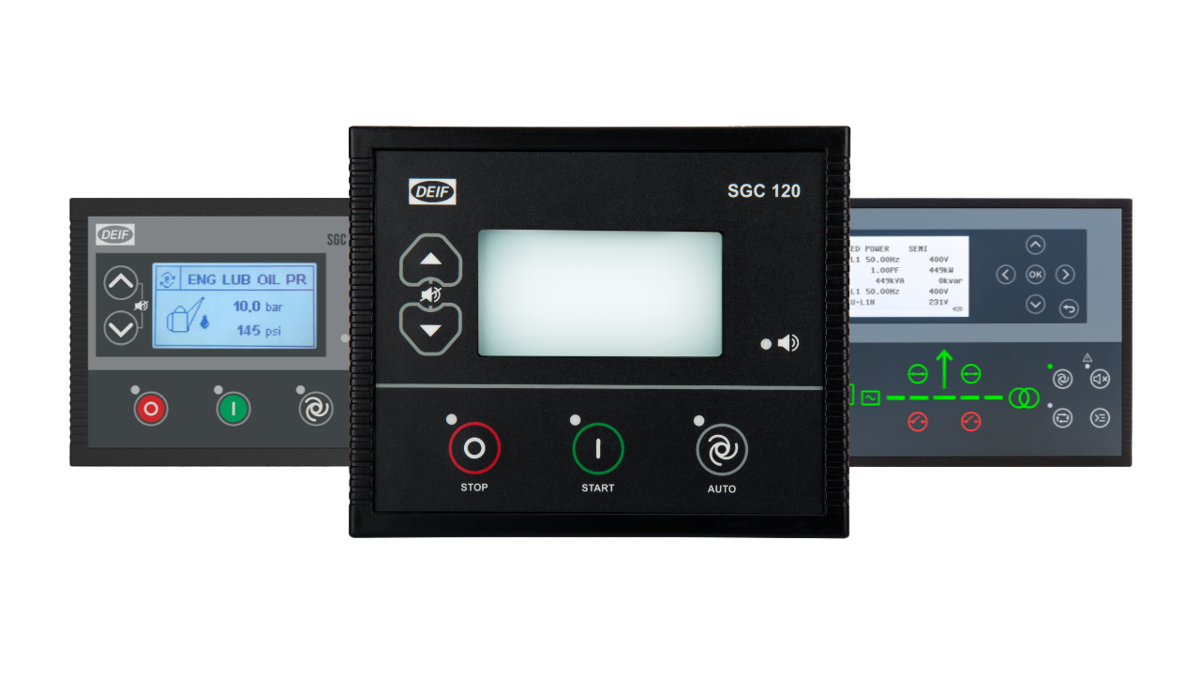How DEIF controllers help genset OEMs comply with emission norms
CPCB 4. Stage V. Tier 4 Final: Governments all over the world are enforcing strict emission regulations. As a generator manufacturer, you need to ensure compliance whilst maintaining reliable performance. This blog post explains how DEIF can help you.
All over the world, authorities are enforcing emission norms that aim to lower atmospheric pollution by reducing NOx, CO₂, and particulate matter emissions from generators and other diesel engines. From CPCB 4 in India to Stage V in Europe and Tier 4 Final in the USA, you need to comply with these standards. But how do you make sure your genset products consistently stay within legal emission limits – and how do you prove this to authorities?
The answer is to use advanced genset control technologies to keep emissions low, and to document genset performance. DEIF genset controllers are designed to do just that, helping you effortlessly meet regulatory requirements – and helping you maintain reliable and efficient power generation performance. This blog post explains how.

Real-time monitoring and control
All DEIF genset controllers, from the SGC series and the AGC-150 to the AGC-4 Mk II and the iE 250, can communicate with a wide range of engines and engine control units (ECUs), and they support relevant parts of the generic J1939 protocol. This means that with almost any engine brand, DEIF controllers detect issues as soon as they occur.
When the ECU detects an emission fault, for example because NOx emissions are too high, it generates a diagnostic trouble code (DTC). The DEIF controller immediately picks up this DTC, and it alerts the operator via LEDs or messages on the display – and optionally on remote monitoring systems or similar via alarm relays. In addition, the controller can be configured to automatically take appropriate action, for example reducing engine speed or shutting down the genset for inspection.
Optimised performance through built-in protections
In addition to monitoring DTCs, DEIF controllers optimise generator performance through built-in protections. Not only do these protections safeguard the unit from electrical faults; they also help the genset meet emission requirements.
For example, by preventing over-temperature and over-speed, the protections prevent inefficient combustion that could increase NOx, CO, and particulate emissions. And by maintaining stable engine operation, they contribute to stable power output that leads to consistent engine load and helps the engine burn fuel optimally. Stable operation also provides ideal exhaust conditions, ensuring correct performance of exhaust after-treatment systems like diesel particulate filters (DPF), selective catalytic reduction (SCR), and exhaust gas recirculation (EGR).
By protecting the genset against shutdowns caused by electrical faults, DEIF genset protections also reduce the number of restarts, thereby lowering hydrocarbon emissions.

Lowering fuel consumption and emissions
DEIF controllers help you optimise load management for your genset which improves fuel efficiency. For example, the controllers can actively manage loads by dividing them into load groups that are connected and disconnected based on currently available power.
By constantly monitoring the load, the controller can automatically control genset speed to match the current load requirement, thereby optimising fuel consumption. And by optimising fuel consumption, you optimise operating cost for the genset user – and minimise emissions.
Integration with after-treatment systems
We have already discussed how the built-in protections of a DEIF controller help ensure stable engine operation which ensures correct after-treatment system performance. But the DEIF controllers are not limited to ensuring optimal conditions for SCR, DPF, and EGR systems: The close integration between the controller and the ECU means that the controller also receives DTCs related to after-treatment systems.
This means that the operator is immediately alerted if the systems are not working as they should – and the genset can be configured to automatically take corrective action to avoid emission levels that contravene regulations.
Compliance through data logging and reporting
Thanks to the close integration between the DEIF controller and the ECU, the controller continuously receives DTCs and other performance data about the genset. This data is logged in controller memory and can easily be retrieved for troubleshooting purposes.
In addition, data logging enables you to easily retrieve the data you need to document emission performance during the process of obtaining approval of the genset according to emission norms. By documenting genset emission performance, the DEIF controller eases this approval process.
Contact us to learn more
With emission norms tightening globally, genset OEMs need smart, compliant controllers to meet regulatory demands. DEIF genset controllers give you consistent operation that complies with CPCB 4, Stage V, and Tier 4 Final. They optimise engine performance to reduce fuel consumption and atmospheric pollution; they provide seamless integration with after-treatment systems; and they provide the documentation you need for regulatory reporting through advanced data logging.
In conclusion, DEIF helps you ensure regulatory compliance while improving genset efficiency and sustainability. We have decades of experience with genset control and optimisation, and we support genset OEMs all over the world with a complete range of control devices and accessories, local-language support, value-added training, and great delivery performance. Contact us to learn more.


